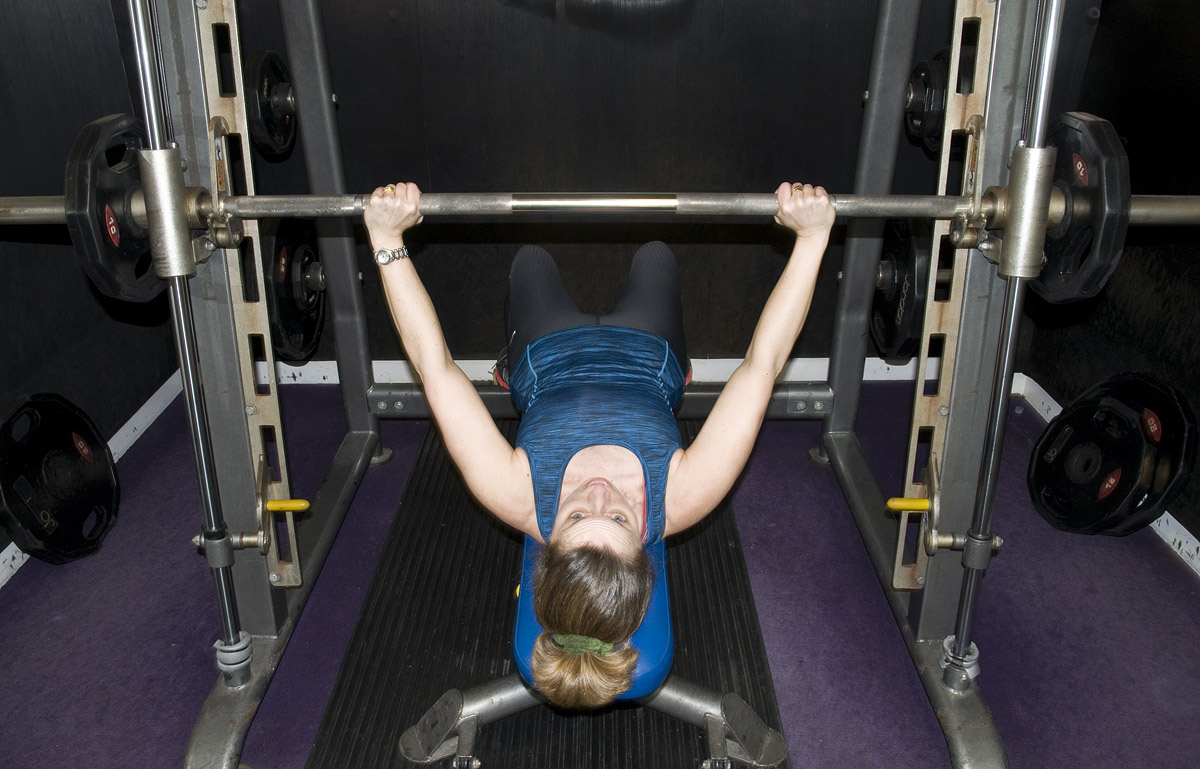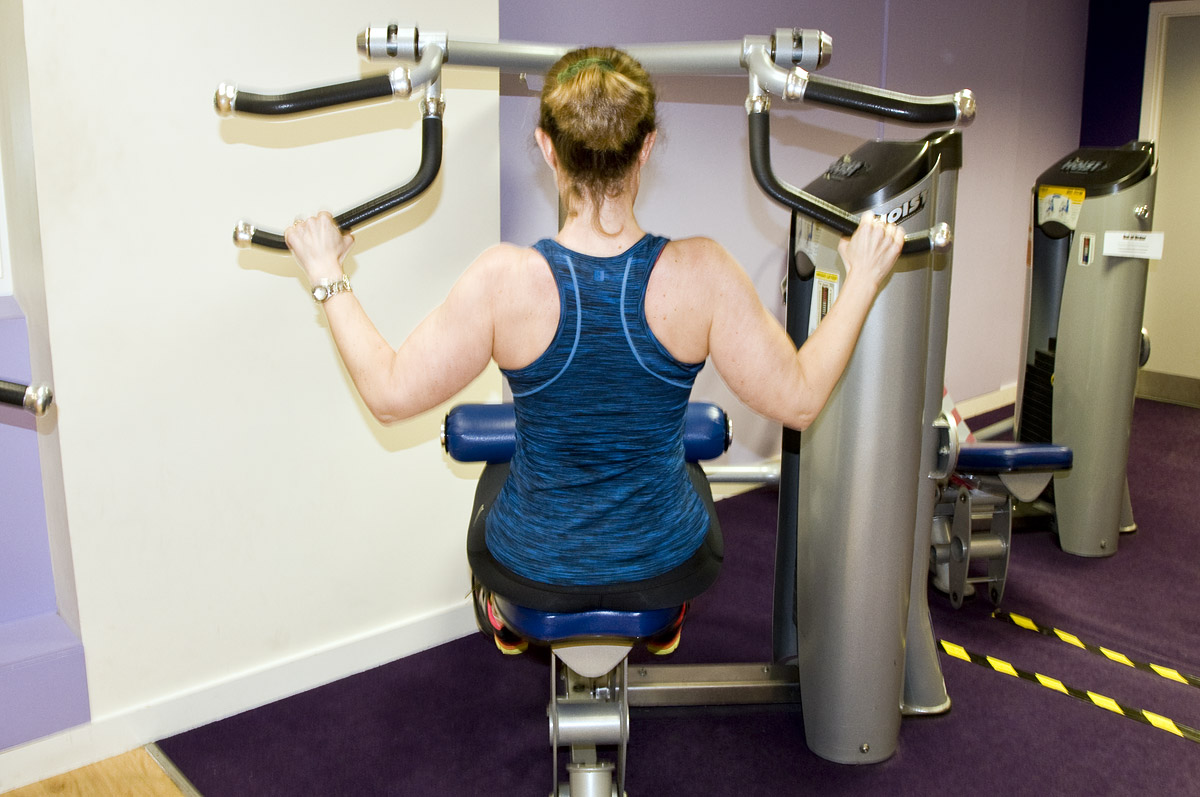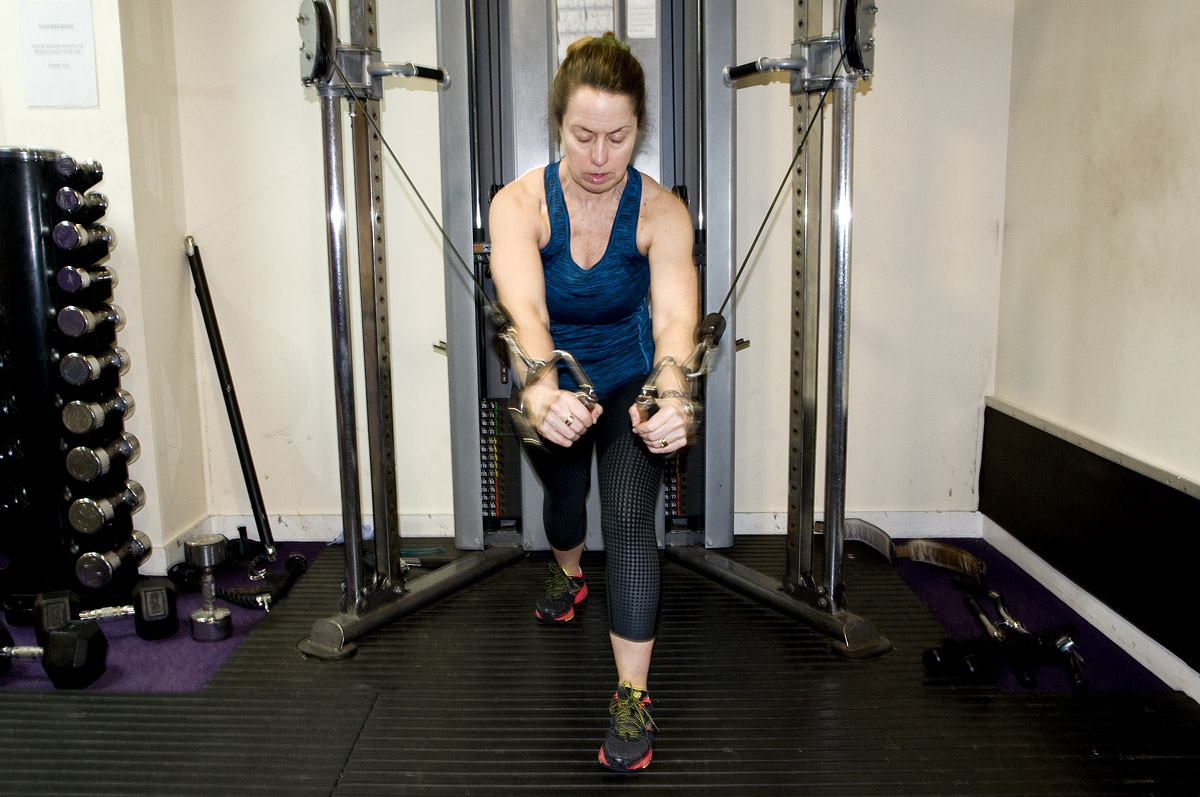Women, Weight Training and Weight Loss. When we think of exercise appropriate to weight loss, we naturally think of low to medium intensity ‘fat burning’ activities such as cycling, jogging and aerobics, and these do indeed play a key role in healthy weight control. But what of weight training? Do we need to lift weights and use resistance training equipment as well, or is this type of exercise just for people who want to build their muscles? The short answer is YES! In this article we discuss the benefits of weight training, and debunk some of the myths.
Strength and tone
By ‘weight training’, we are referring to the use of weights and/or resistance to strengthen and tone our muscles. We know what ‘strengthen’ means, but what about ‘tone’? Many a time in exercise classes we’ve heard our instructor talking about ‘toning’ the muscles, but what does that actually mean?
We know that our muscles tense in order to move and stabilise the different parts of our bodies, but even at rest there is a residual amount of tension in our muscles, and this is our muscle tone. Muscle tone can be defined as a muscle’s resistance to being stretched when it is not being consciously contracted. Adequate muscle tone is very important for our posture, enabling our muscles to hold everything in the correct position, even when we are not actively moving or supporting ourselves. Well-toned muscles will also hold their shape better, and not appear ‘droopy’ or ‘floppy’ (flaccid). By ‘toning’ our muscles, we mean ‘improving our muscle tone’. Weight training exercises improve both muscular strength and tone, and for our purposes don’t need to be considered separately here.
Health benefits of weight training
Weight training benefits the body in a number of ways, and we thoroughly recommend you incorporate this type of exercise into your weekly fitness routine:
Improving muscle tone makes you feel better about yourself. Toned muscles look better and feel better. Even if you are still carrying excessive body fat, an improvement in your muscle tone will be one of the first signs that you are moving towards a healthier body, so is great for motivation and morale.
You will become stronger. As you strengthen your muscles, you will become physically stronger and more capable, which will also have a positive psychological impact on your wellbeing. From a practical perspective, you may find that you are able to do some things you couldn’t in the past (activities of daily living). Again, this will also make you feel great, and improve your quality of life!
Stronger muscles burn more calories. Yes you read that correctly! You need more fuel to apply that greater force your stronger muscles can now exert, plus more toned muscles burn more calories even whilst at rest. Weight training is therefore an important component of weight loss.
Weight training improves bone density. Our bones respond to any pressure we subject them to, becoming denser in order to cope with the increased workload. Weight training is therefore extremely important as we age in order to keep our bones strong.
Weight training can help manage diabetes. Studies have shown that weight training helps the body respond better to insulin, and improve the way it uses blood sugar. For those with diabetes, weight training can also reduce blood pressure, and reduce the risk of heart disease.
Weight training has a broad range of psychological benefits. Various studies have also shown that weight training can help with anxiety and depression, and also improve sleep quality.
The benefits of weight training are clear! But what about some of the myths surrounding weight training?
Weight training myths
You may have some concerns about starting weight training, or you may believe some of the spurious claims made about weight training. Here we shall endeavour to give you a complete and honest picture.
“I’m worried that I will start looking too ‘muscly’ or ‘masculine’.“
There’s no need to worry about that at all – you won’t! To start with, you won’t end up with big bulging muscles! Building significant muscle mass requires a very intensive and specific type of weight training and diet, far in excess of the amount of weight training that most people undertake. And even if you did pump iron six days a week for hours on end, women have a different musculature to men, and do not grow large muscles. (If you see huge, masculine muscles on a woman, it is likely she has taken steroids or male growth hormones for the purposes of bodybuilding.) And you won’t end up looking ‘sinewy’ or ‘ripped’ either. That effect is only possible with an abnormally low percentage of body fat, and again it takes an enormous amount of effort to achieve that.
“I’m too old for weight training, and I might injure myself.”
Any activity can result in injury if practiced incorrectly, which is why we strongly recommend you first join a reputable gym and talk to a qualified instructor. But does being older mean you are more likely to get injured when weight training? Well, no, not if it is practiced correctly, as your instructor will tailor your routine to suit your specific needs.
One of the changes women experience after reaching the menopause is a reduction in bone density (osteoporosis). For that reason, some women may fear they could injure themselves by weight training if they have brittle bones. Again, however, your routine will be structured to account for your age, gender and any medical conditions you may have, so you needn’t worry. Moreover, as we have already discussed, weight training will improve your bone density, meaning that you will be less likely to injure yourself during your everyday life.
“Sit-ups will burn fat from my belly.”
The idea that you can exercise a particular part of your body – and thereby burn fat from it directly – is known as ‘spot reduction’, and I’m afraid that spot reduction is a complete myth. In short – you can’t.
Our bodies accumulate fat in cells throughout our bodies, both under the skin (subcutaneous) and inside the body cavity (visceral). The pattern of fat throughout a person’s body is determined by gender and genetics, e.g. often (but not always) a woman will put on fat around her buttocks and hips, whereas men more commonly store fat around the stomach area.
As you begin to eat less and exercise more, and thereby burn fat, you will lose it throughout your whole body in approximately in reverse of the way you put it on, and irrespective of which parts of your body you exercise the most.
“Weight training turns fat into muscle.”
That is also incorrect. Muscle is made from large molecules called ‘proteins’, and proteins from smaller molecules called ‘amino acids’. Fat, on the other hand, is constructed completely differently, from three types of ‘fatty acid’ and a molecule called ‘glycerol’. Fat is made from sugars in the blood.
Expending extra energy by weight training will help you burn more calories, and if the total calories you burn are greater than those you take in from food, then you will gradually lose fat throughout your whole body in the way previously mentioned. At the same time, you will strengthen and tone your muscles. You cannot, however, directly turn one into the other.
“Can I burn fat and build muscle at the same time?”
There is some disagreement regarding the answer to this question. Losing fat requires a calorific deficit (eating less than you use), whereas most agree that building muscle requires a calorific surplus (additional food from which to gain the energy to participate in enough weight training to build muscle). On the other hand, some believe that simultaneous fat loss and muscle gain is possible, but only in very overweight people with low muscle mass.
Either way, weight training will be of huge benefit to you as you embark on a fat loss programme, even if your muscle mass gains during this period are small, and for the reasons we have discussed above.
We would suggest you continue with your healthy and balanced diet plan whilst weight training. Note also that recent research supports the widely held belief that one should increase protein intake along with weight training, in order to benefit most from it.
How much and what sort of weight training should I do?
Join a good gym and seek guidance from a qualified instructor. Whilst there are guidelines available for people embarking on weight training exercises, there are many parameters and related issues that need to be considered. When you first speak to your instructor, she/he will ask you to complete a health questionnaire, and ask you to talk first to your GP if there are specific health concerns. It is very important to be assessed properly before embarking on any exercise routine.
Going into the specifics of a weight training routine suitable for everybody would fall well outside the scope of this article, but here is a short, theoretical introduction, to introduce you to some terminology:
- A visit to the gym is often referred to simply as a session, as it is not a formal class where you would follow an instructor.
- You will be advised to undertake weight training sessions a certain number of times each week. This is known as frequency, (perhaps just once or twice a week to start with).
- During each session, you will undertake a series of different exercises, each exercise being a single movement designed to work one or more specific muscle groups. These may be the same exercises every session, or may vary between sessions (split routine). Exercises may use resistance training equipment (machines), barbells and dumbbells (free weights), or just your own body weight (e.g. squats and sit-ups).
- Each exercise is carried out a prescribed number of times – repetitions (reps), (e.g. 10) before you stop for a rest interval (e.g. 90 seconds). A repetition is one single movement of an exercise, and should be carried out using the correct technique.
- A group of repetitions followed by a rest interval is known as a set, and for each exercise you will carry out a prescribed number of sets (e.g. 1-3).
- The weight you will use for each exercise will be determined by your instructor, according to what is most safe and effective for you. (Don’t worry, at first you will be encouraged to use relatively light weights, to get your muscles used to the movements.)
- A weight training routine will take a specific period of time – duration, (e.g. 1 hour, this hour also including an initial warm-up period and stretching afterwards).
- Your instructor will advise you of appropriate frequency, duration, exercises, numbers of sets and repetitions, weights and techniques. These together form your weight training routine. He or she will also monitor your progress and adjust your routine accordingly as you progress.
— Routine: one or more sessions each week (the frequency).
— — Session: a series of exercises (and lasting a specific duration).
— — — Exercise: each to be carried out in a number of sets and with a specific weight.
— — — — Set: each to include a number of repetitions (and followed by a rest interval).
— — — — — Repetition: to be carried out using the correct technique.
Summary – Women, Weight Training and Weight Loss
We have discussed the importance of weight training for general health, and as part of an exercise routine to help you lose weight. We have outlined some of the many advantages of weight training for health and wellbeing, and debunked some of the myths. Finally, we have talked a little about what to expect, and explained some of the terminology. The rest is up to you. Good luck!
Women, Weight Training and Weight Loss, by Jane Mackenzie.




 Jane on WhatsApp
Jane on WhatsApp






